#The History of Medicine
Text
anatomists in 16/17th century europe:

#the history of human dissection#the history of medicine#i made this meme for class please enjoy it because I had to cite my sources </3#in mla format </3#anyway. heache is back a little the ibprofen wore off and hasn't kicked back in
20 notes
·
View notes
Text
There's been an uptick of interest in my medical history posts, so have a Medical History Masterpost:
Skillfully Combined™ (the notorious Victorian cough syrup photo and the pharmacology behind it)
The Industrial Revolution & the Pharmacological Boom (ft. expansionism, chemistry and geopolitics)
The Edwin Papyrus & Imhotep (ft. input and correction from an Egyptologist!)
Cancer as a Chronic Disease through History
Imhotep's gout treatment and modern pharmacology
Absolute Madlad Ambrose Paré, Ligature and Haemostatic Clamps
NB: I'm a biomedical science undergrad who's been reading literature about medical history since age 7, not a doctor or a historian. Whilst I add academically weighted sources where necessary, I strongly encourage you to do your own further reading, and not to take my word as Gospel. Finally, none of this is medical advice, nor am I qualified to give medical advice. If you're worried, see your GP.
#em.txt#adventures in biomed#medblr#history#the history of medicine#medical history#historical medicine#pharmacology
51 notes
·
View notes
Text
"Whatever is in that flask would fix me" it's piss. Any time you see a Medieval illustration of a guy at a sick person's bedside holding up a flask and peering intently at it, nine times out of ten that specific visual trope is meant to be a depiction of a doctor performing urinalysis. The flask is full of piss.
6K notes
·
View notes
Text

#radical feminism#womens rights#feminism#gender critical women#radical feminist safe#adult human female#biological women#rad fem#trans exclusionary radical feminist#terfsafe#women’s issues#inventions#history#womens history#technology#medicine#education#entertainment#home cooking#engineering
1K notes
·
View notes
Text
hey if you're feeling bad today just remember that the ancient Egyptians knew to use the pulse as a measure of overall health, had pregnancy tests, practiced palliative care, used suture strips to close up gashes, and treated dislocated jaws and broken noses the same way we still do today
2K notes
·
View notes
Text
was talking to my mom about how white people ignore the contributions of poc to academia and I found myself saying the words "I bet those idiots think Louis Pasteur was the first to discover germ theory"
which admittedly sounded pretentious as fuck but I'm just so angry that so few people know about the academic advancements during the golden age of Islam.
Islamic doctors were washing their hands and equipment when Europeans were still shoving dirty ass hands into bullet wounds. ancient Indians were describing tiny organisms worsening illness that could travel from person to person before Greece and Rome even started theorizing that some illnesses could be transmitted
also, not related to germ theory, but during the golden age of Islam, they developed an early version of surgery on the cornea. as in the fucking eye. and they were successful
and what have white people contributed exactly?
please go research the golden age of Islamic academia. so many of us wouldn't be alive today if not for their discoveries
people ask sometimes how I can be proud to be Muslim. this is just one of many reasons
some sources to get you started:
but keep in mind, it wasn't just science and medicine! we contributed to literature and philosophy and mathematics and political theory and more!
maybe show us some damn respect
2K notes
·
View notes
Text
Obviously we have to wait for the video to know the story, but for anyone who’s studied any kind of social history/psychology/sociology/etc. And knows a little about the diagnosis of hysteria, Victorian mores, the use of lobotomies/shock therapy/etc to treat women who failed to live up to patriarchal ideals and the minimizing of women’s physical and mental health issues historically in the medical and psychiatric fields plus the old Hollywood of it all… the imagery is Telling The Story. I am fucking SEATED.
#I feel like I’ve been slammed back in time to being 19 in college right now lol#AND I SAID MY DEGREE WOULD NEVER COME IN HANDY LMAO#social psych social history film comms LOOK MA ALL MY CLASSES ARE GIVING ME AN A IN SWIFTIEISM#oh yeah I forgot history of western medicine I did that one too lol#the tortured poets department#fortnight mv
1K notes
·
View notes
Text
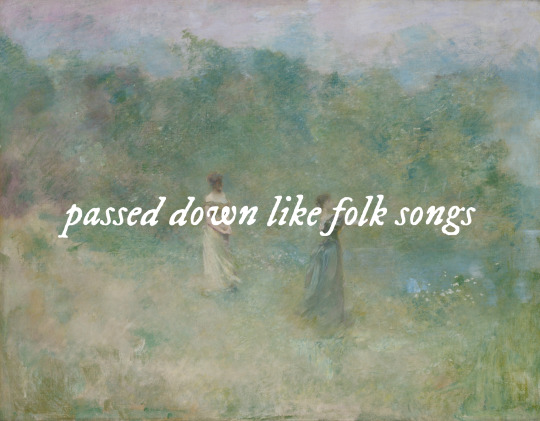

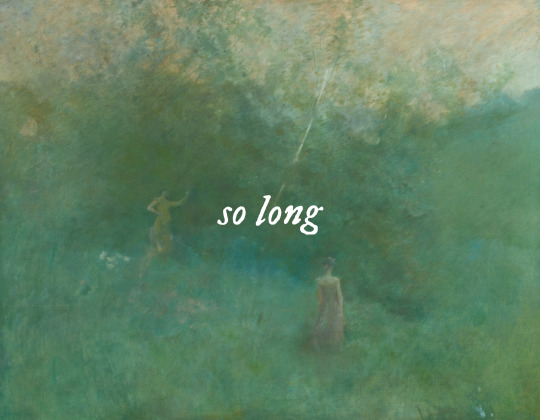
Summer – Thomas Dewing // The Hermit Thrush – Thomas Dewing // The White Birch – Thomas Dewing // seven – Taylor Swift
#seven is absolutely one of my favorite songs of all time#also please excuse my absence i tried a new anxiety medicine and boy howdy it did not sit right with me#slowly trying to get back into things now#thomas dewing#seven#seven song#seven taylor swift#folklore#folklore album#folklore ts#folklore taylor swift#taylor swift#ts edit#tsedit#tswiftedit#tswiftlyrics#ts lyrics#tswift edits#tswift lyrics#art#art history#lyrics#lyric art
460 notes
·
View notes
Photo

An ob-gyn in Virginia performed unnecessary surgeries on patients for decades. He took their reproductive organs, gave them false cancer diagnoses, and did other terrible harm. When his victims learned the truth, they fought back. Issue no. 146, DAMAGES, is now available:
[Debra] requested her medical records and was stunned to find discrepancies with what Perwaiz had said to her during appointments. Most glaringly, she didn’t see any mention of precancerous cells on her cervix; the tests Perwaiz performed on her had come back normal. “If I was normal,” Debra said, “why did I have a surgery?”
There were other inconsistencies. One form from an appointment described Debra complaining of back and pelvic pain, which she told me she never did. Another document dated the day before her surgery stated that she “insisted on having those ovaries removed through the abdominal wall incision and not vaginally,” and that the “consent obtained after entirely counseling the patient [was] for abdominal hysterectomy.” In fact, she had requested the opposite surgical approach, and she recalled no such conversation with Perwaiz; the only time she’d spoken with him in the lead-up to her procedure was in passing in the hospital hallway.
Debra was sure she had a malpractice case. She went to several lawyers, but none of them would take her on as a client. “So many men—man after man saying, ‘You had a decent amount of care, and that’s all you’re afforded,’ ” she said. Frustrated, she came up with a new plan: “I said, ‘Alright, I’m going to learn how to sue this bastard myself.’ ”
#atavist journalism healthcare medicine doctors medicalmalpractice reproductivehealth racism justice virginia truestory#cancer women womenshealth history
817 notes
·
View notes
Text

(TW injury description)
I am SO glad you asked I lose my mind over this man. Sidney Beldam! He’s most known for his miraculous recovery from a major facial injury sustained while he served as a young sergeant in the First World War. If you’ve read the Facemaker by Lindsay Fitzharris you might recognise him! Sources differ slightly about his story, so I’ve pieced it together as best I could. The photos below were from about February 1919!
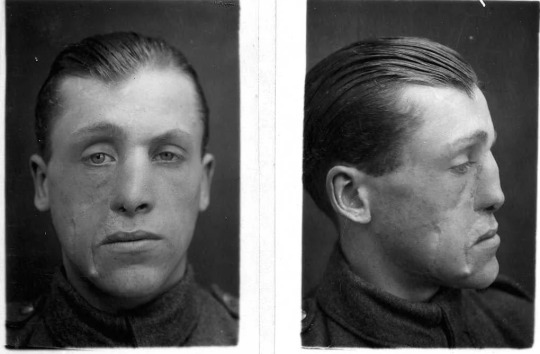
Born in 1897, Sidney was about 17 living with his mother in Cambridge, England when the Great War commenced. While he didn’t enlist initially, he was soon conscripted when it came about in 1916 though thankfully he was in a non-combatant role driving lorries transporting soldiers to boats headed for France. It’s where he learned he enjoyed driving! However in April 1917, Sidney was transferred to the Machine Gun Corps and eventually rose to the rank of sergeant where only 7 months later, his life would change forever.
During the battle of Passchendaele, one of the muddiest most gruelling segments of the war, Sidney was on the frontlines when a shell burst, sending a shrapnel fragment tearing diagonally through his nose and the right side of his face. The young soldier collapsed face first into the mud which ended up saving his life as falling backwards would have caused him to choke on his own blood. For three days Sidney laid in a mangled heap floating in and out of consciousness while vermin scurried about his body and the other dead and wounded around him. No one would ever know the details of those agonising three days, but the trauma he experienced there left him with a lifelong phobia of rats and cockroaches. After the initial wounded had been cleared out, a wandering band of stretcher bearers discovered Sidney alive after one man touched him with his boot fully expecting him to be dead. Miraculously, he was still clinging to life.
The 19 year old sergeant was rushed down the line and then transferred to two different military hospitals where his wounds were hastily stitched in an effort to save his life before infection could spread. Unfortunately, closing the gap where he was missing flesh in his cheek caused his upper lip to be pulled into a sneer and a sunken depression formed where most of his nose was missing around the bridge. Still, he was lucky to be alive, which he later used to remark. Well he was luckier still as he would be transferred to Sidcup military hospital in Kent where he would become a patient under Sir Harold Gillies, the man often considered the pioneer of modern plastic surgery. When he arrived at hospital in 1918, his wounds were healed but his face still bore the heavy trauma of his experience. If you want to see his photographs upon arrival, I won’t post them here but if you search his name, the photos are everywhere. IMO they’re not graphic but I know it can upset some people.
Gillies went to work trying to restore Sidney’s face. This required him to reopen the wound in his cheek where a skin flap was grafted to allow his upper lip to return to normal. He also folded down a skin flap from his forehead in order to create a new nose. Behind his facade, a series of tubes and canals had to be inserted for proper sinus drainage and other unnamed functions. While his initial handful of surgeries did most of the work to reconstruct his face, Sidney underwent over 40 surgeries between 1918 and the 1930s, some reconstructive and some to evacuate the tubes behind the flesh, meaning the common cold was a routinely painful affliction for him. Gillies understood operations were traumatic for the men at Sidcup, especially since most required more than one, and so made a point about creating a lighthearted ward environment, one Sidney says was quite jolly with the staff doing everything they could to make them feel comfortable and dignified as possible. And while I thought the topmost photos were the most updated case study photos for his recovery, I stumbled upon another set from 1920 in the Faces of War by Andrew Bamji I have not seen posted anywhere!
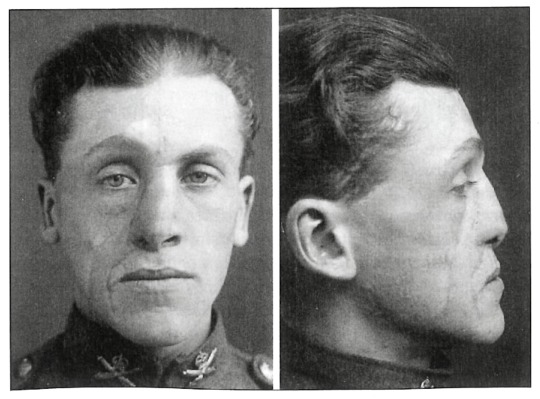
And lads listen. In such a sweet little twist, while Sidney was still recovering from the bulk of his major surgeries, a local pianist by the name of Winifred volunteered to play for the resting servicemen, all of whom had some form of disfigurment or amputation. Carrying in her sheet music, she and Sidney laid eyes on each other for the first time and she later remarked how his smile instantly lit up the whole room! For them, it was love at first sight. The two were soon married, and although it was in the 1920s, I don’t have an exact year for this. This most likely came after Sidney was finally discharged from service in 1921. There is a photo of their wedding and y’all look how SWEET!!
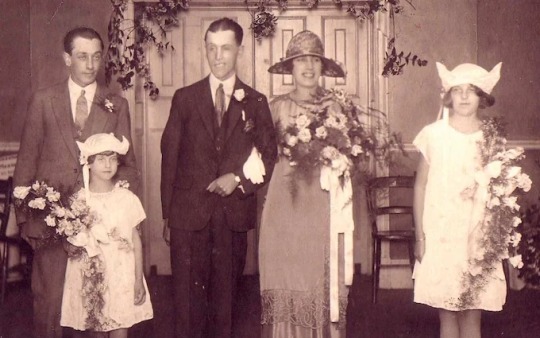
Between his initial surgeries and army discharge, Gillies asked if Sidney would be his personal chauffeur, an offer he took up quickly as he loved driving from his time with lorries during the war. One somewhat humorous account tells of Gillies—who was a bit scattered at times—asking Sidney to renew his driver’s license as the surgeon left it until the last day to take care of; Sidney in a rush waited in a long line at the county hall before jumping the queue and begging the administrator to expedite his employer’s license as it was needed to drive him to the hospital the next day. The man refused, even for a surgeon to get him to his patients. Sidney went to another staff member who was friends with Gillies and begged him the same. The man cheerily agreed but was still in need of a signature from the stubborn administrator who again refused... at least until he found out Harold Gillies nearly won a golfing championship, at which point he took Sidney to his personal office to expedite the license as he was happy to do business for a skilled golfer (apparently saving people’s lives doesn’t matter as much??). A no doubt perplexed Sidney was finally able to get back to the hospital on time!
After his army discharge and most likely about the time of his marriage, Sidney moved back to Cambridge where he worked for the council as a rent collector. He was so well liked, apparently even from the people he collected from, that he soon worked his way to Housing Manager for Cambridge. About this time, he had a daughter, Pam. Every account I read of him, people gush about how sweet he was. His wife recalls how Sidney was always adored by all his family and friends. His granddaughter Marilyn McInnes in an interview said, “He was the most warm and optimistic and loving man. I adored my grandfather, I was constantly on his lap as a small child. I never noticed anything funny about his face, I guess I thought all grandads looked like mine.”
Sadly, Sidney Beldam passed away from cancer at about 80 years old in 1978. But considering the man was given 6 months to live and ended up living for 60 years more surrounded by a large and loving family, I’d say he certainly had a full life. There is a picture of him and his wife in the 60s and they are absolutely charming!!

But anyway that’s me done rambling I’ve a massive crush on him. His story makes me genuinely happy to tell and I’m so glad you asked!
#I love love love this man sm he’s just described as this ray of sunshine!!#I want to put him in my pocket#And the story of him and his wife like actually kill me that is so cute#I’m so happy he was able to live a full life#Also yeah lads he is so fine ngl when I saw him in that book I was like WOW#he has such gorgeous eyes and I love his nose#and his smile#wwi#world war 1#sidney beldam#history#wwi medicine#injury tw#medical tw#long post
485 notes
·
View notes
Text
Food is fundamentally beneficial to our health and many doctors were murdered for this 🤔
#pay attention#educate yourselves#educate yourself#knowledge is power#reeducate yourself#reeducate yourselves#think about it#think for yourselves#think for yourself#do your homework#do some research#do your own research#ask yourself questions#question everything#food#for your health#health tips#healthy living#food is medicine#you decide#news#hidden history
550 notes
·
View notes
Note
coral— what’s something you’re passionate about?
coral— what’s something you’re passionate about?
I'm gonna be SO neurotypical about this! [is lying]
As you've likely gathered, I'm (almost!) a biomedical scientist, with a focus in microbiology.
I'm really passionate about ethnomedicine, specifically the ethnomedicine of medieval Europe and Southern Africa. Think Bald's leechbook and herbariums.
There's a lot of potential application of their bioactive isolates as alternative antibiotic therapies to combat AMR, though research is still in it's infancy.
If you're interested, I'll make a separate post on ethnomedicine and/or current research but I'll stop rambling in this ask!
3 notes
·
View notes
Text
I sometimes wonder whether there's any correlation between the historical decline in alleged assassinations where the victim is claimed to have been poisoned via some extremely unlikely vector and improved understanding of what an allergy is.
5K notes
·
View notes
Text

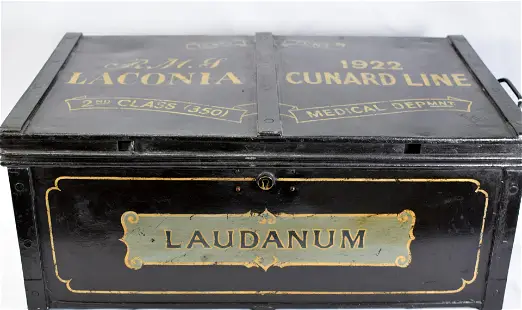
Two medicine storage boxes for Cocaine, Opium and Laudanum used aboard the RMS Laconia, 1922 and Empress of Britain, 1931
#naval artifacts#naval history#medicine storage#early 20th century#age of steam#passenger ships#the great liner
584 notes
·
View notes
Text
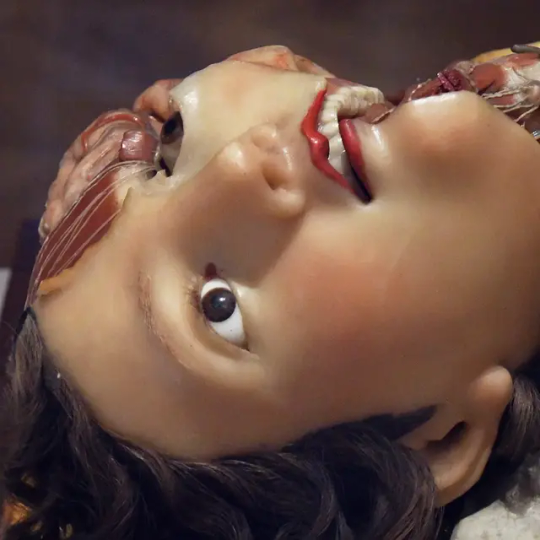

Model depicting internal organs for medical study (1700's)- Science museum, London
#dissection#dissect#anatomy#medical#medical science#medicine#history#science museum#cadaver#mannequin#dead#death#goth#gothic#horror#macabre#morbid#gruesome#goth aesthetic#goth art#eye#evil eye#rotting#decay#internal organs
350 notes
·
View notes
Photo

Discovery of Penicillin
The age of antibiotics began in September 1928, with the discovery of penicillin by Alexander Fleming (1881-1955), then a professor of bacteriology at St. Mary's Hospital in London. Previously there were no effective treatments against a range of bacterial infections from pneumonia to sepsis.
Penicillin became the basis for curing bacterial infections including smallpox, cholera, tuberculosis, scarlet fever, pneumonia, gonorrhea, meningitis, and diphtheria. Later antibiotics would form a class of medicines designed to combat, and cure, bacterial infections but also prevent the further growth of such infections.
Background
The use of fungi and molds, which contain antibacterial substances, to treat bacterial infections can be traced back to ancient cultures around the world, but these early attempts were unable to identify the component that provided the medicinal effect. Joseph Lister (1827-1912), an English surgeon and the "Father of antisepsis," recognized the antibacterial component of mold, but did not publish his findings. In the 1870s, Robert Koch (1843-1910), a German biologist, and Louis Pasteur (1825-1895) and Jules Francois Joubert (1834-1910), two French biologists, discovered the germ theory, which established that particular bacteria cause specific diseases. Additionally, they proved that the effects of introducing certain bacteria to various cultures inhibited the growth of more deadly bacteria.
The discovery of penicillin represented a turning point in medical history while Fleming would later be recognized by Time magazine as one of the most influential people of the 20th century:
When I woke up just after dawn on September 28, 1928 I certainly didn't plan to revolutionize all medicine by discovering the world's first antibiotic, or bacteria killer. But I suppose that is exactly what I did.
Continue reading...
169 notes
·
View notes